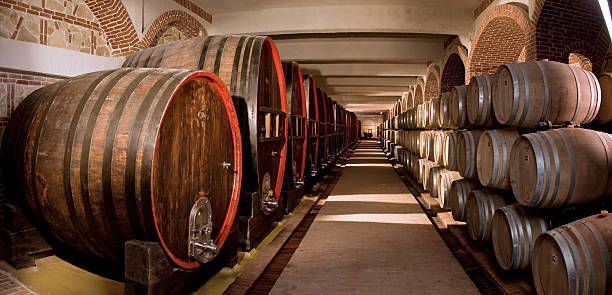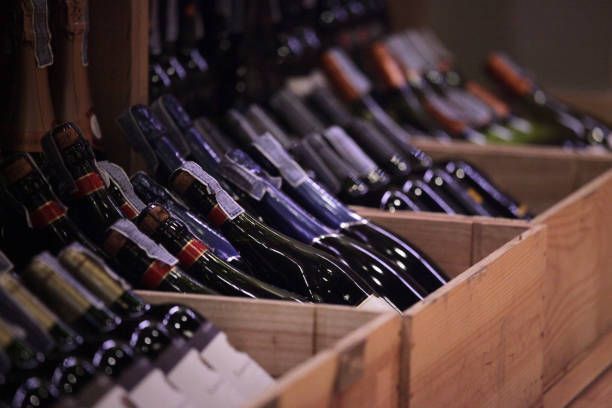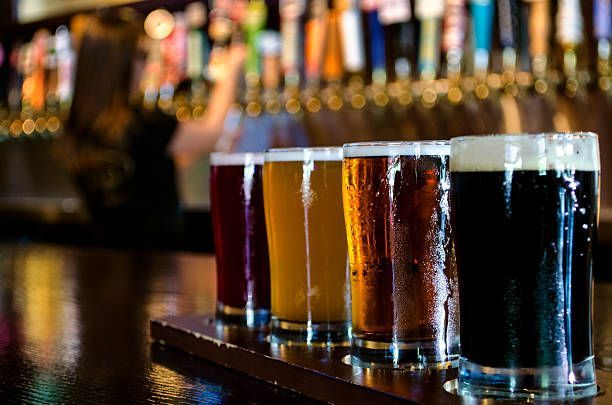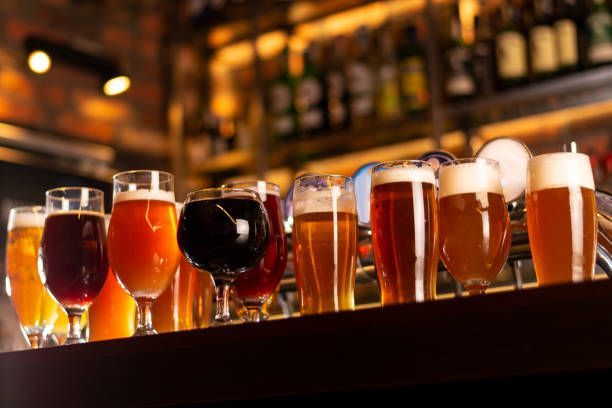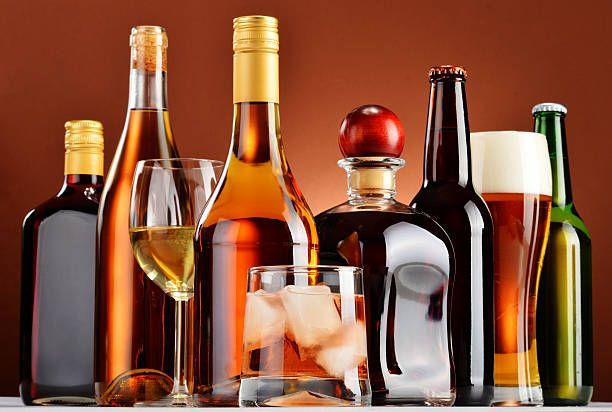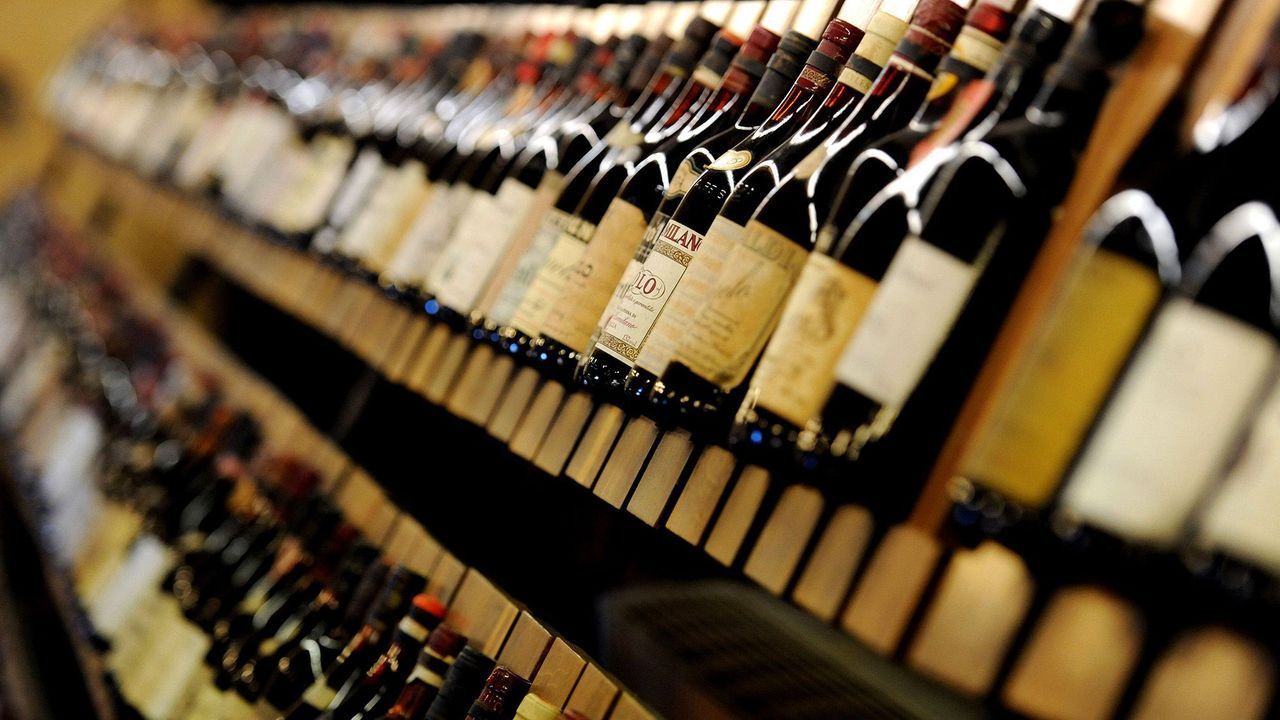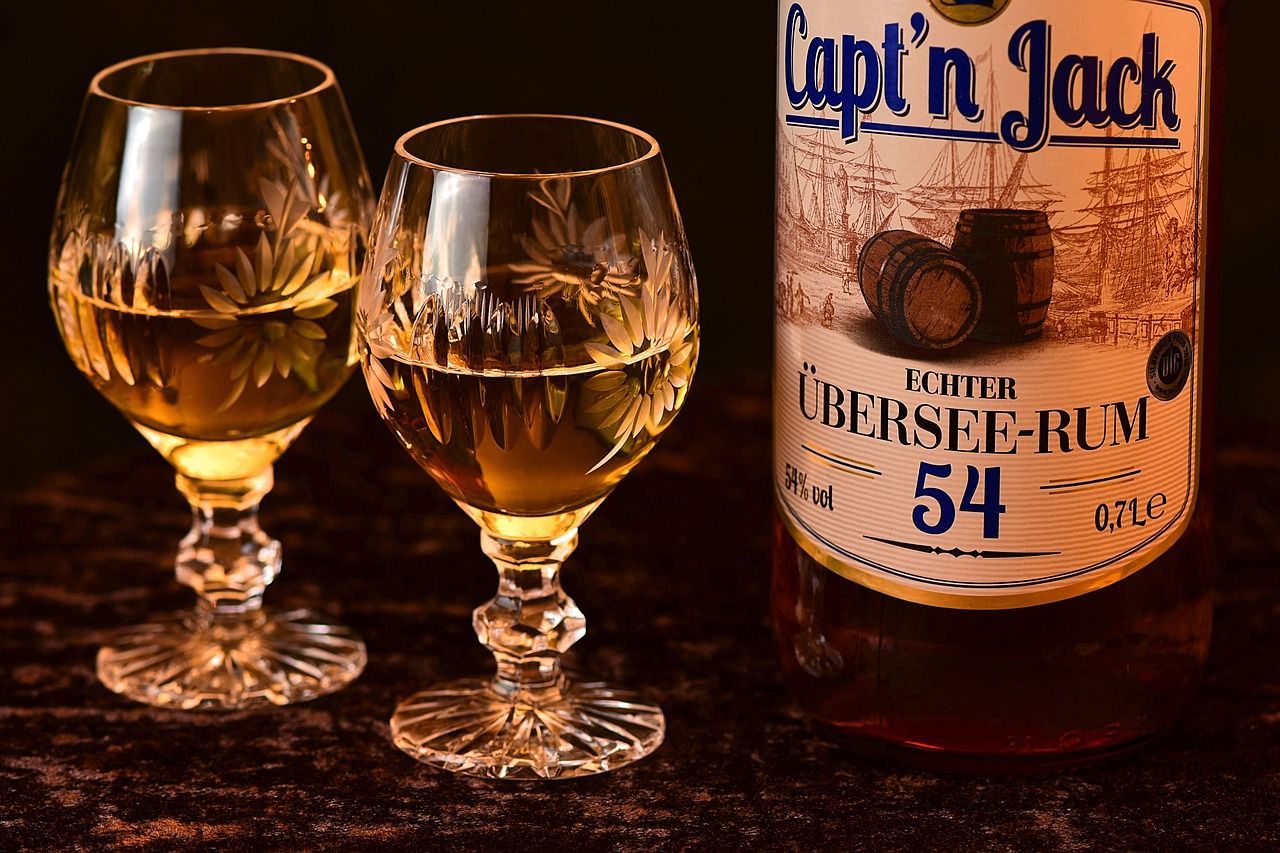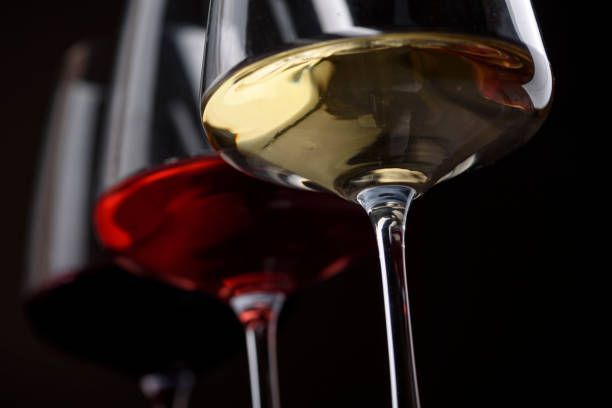Wine is a widely consumed beverage around the world, and while many people appreciate the flavor and sensation of wine, few are aware of the scientific principles underlying the wine's varying levels of alcohol. The amount of alcohol in a wine is a key factor in defining its flavor, aroma, and general quality. We'll go into the specifics of wine's alcohol content in this post, including how it's calculated, why it matters, and what influences it.
Unraveling the Secrets of Alcohol Content in Wine
Millions of people all around the world adore wine and drink it regularly. But did you know that the alcohol content of wine can differ significantly from bottle to bottle and can dramatically affect the flavor and body of the wine? The amount of alcohol in wine, its significance, and how it can impact your entire wine-drinking experience will all be covered in this blog post.
The amount of alcohol by volume (ABV) in wine is referred to as the alcohol content of the beverage. In most cases, this is stated as a percentage, and it can range anywhere between 5% in some sweet wines to 20% or more in fortified wines like port. The amount of sugar in the grapes at harvest time and the yeast utilized during fermentation are the main factors that affect the alcohol content.
So why is the alcohol content of wine important? First off, alcohol can alter the flavor and texture of the wine, affecting how enjoyable it is to drink. Higher alcohol content wines typically have a heavier body and a more powerful flavor, whilst lower alcohol content wines may be lighter and more delicate. Alcohol can also affect the wine's overall balance, acidity, and fragrance.
The aim of this essay is to provide you with a better knowledge of wine alcohol content and how it can impact your wine drinking experience in general. We'll look at the variables that affect wine's alcohol content, the many wine styles that tend to have higher or lower alcohol content, and how to estimate a wine's alcohol content. By the time you're done reading, you'll be more prepared to choose wines wisely and take full advantage of their flavor.
Understanding Alcohol Levels in Wine
Alcohol Percentage and its Importance
The amount of alcohol in a wine is represented as a percentage of the wine's overall volume and is known as the alcohol percentage. Wine normally contains between 5% and 20% alcohol, with the majority of wines having between 12 and 15%. The amount of alcohol in a wine has a significant impact on its flavor and aroma.
The body, texture, and sweetness of wine are all influenced by its alcohol content. A wine with a higher alcohol concentration may have a fuller body and a more distinct flavor profile. Additionally, alcohol aids in the fermentation process by assisting in the extraction of taste components from the grapes, adding to the richness of the wine.
How Alcohol Content is Determined
Measuring the amount of ethanol in wine allows for the determination of its alcohol content. Usually, this is accomplished by heating the wine to separate the alcohol from the water and other molecules, a procedure known as distillation. The amount of alcohol in the resultant liquid is then measured.
Today, the majority of wine producers measure the alcohol percentage of their wines using a tool called a hydrometer. A hydrometer is a device that assesses the wine's density both during and after fermentation. The proportion of alcohol can be determined using the density difference between the two measurements.
Factors that Influence Alcohol Levels in Wine
The type of grapes used, the climate, the soil, and the methods used during winemaking can all affect the amount of alcohol in a given wine. For instance, grapes grown in warmer climates typically contain more sugar, which results in wines with higher alcohol concentration. On the other hand, grapes grown in temperate climes typically have lower sugar content and, as a result, have lower alcohol levels.
The methods used in winemaking have a big impact on alcohol content. For instance, winemakers may decide to concentrate the grape juice or add sugar to raise the alcohol content. The period of fermentation and the type of yeast used can also affect the wine's alcohol content. The type of grapes used to make the wine might also affect its alcohol concentration. While Riesling tends to make wines with lower alcohol levels, some grape types, like Zinfandel, tend to produce wines with higher alcohol levels.
The Impact of Alcohol Levels in Wine
Wine is a sophisticated drink that can provide a variety of tastes, scents, and sensations. The amount of alcohol in the wine is one of the crucial elements that can affect these characteristics. Next in this blog, we’ll examine the effects of wine's alcohol content on flavor and aroma, body and mouthfeel, ageability, and food pairing.
Flavor and Aroma
The flavor and aroma of wine can be considerably influenced by alcohol content. Higher alcohol concentrations can result in a stronger, more powerful flavor, whilst lower alcohol concentrations can provide a flavor that is more delicate and subtle. The harmony of sweetness and acidity in a wine, as well as how tannins are perceived, can all be impacted by its alcohol percentage.
Fruity and flowery smells are frequently more prominent in wines with higher alcohol concentration. However, the strength of the alcohol itself may overpower these scents, making for a less enjoyable encounter. While wines with lower alcohol content may have more subdued scents, they can also be more rich and nuanced, offering a more enjoyable drinking experience.
Body and Mouthfeel
The body and mouthfeel of wine can also be affected by alcohol content. Higher alcohol level wines may taste fuller and more viscous on the palate, while lower alcohol content wines may be lighter and more energizing.
Additionally, the texture of the wine can be influenced by how the alcohol is perceived. A wine's mouth can feel hot or burn when its alcohol content is excessively high, which can be unpleasant. On the other hand, wines with lower alcohol levels may taste more delicate and smooth.
Ageability
Alcohol content can also affect a wine's capacity to mature. Due to their higher sugar content and more prominent tannic presence, wines with higher alcohol concentration may age more slowly. Over time, the wine's structure and flavor may be preserved thanks to its tannins. High alcohol content wines, however, may also oxidize more quickly, resulting in a lower shelf life.
Wines with a lower alcohol content, on the other hand, might not age as well, but they may be more delicate and subtle while young. These wines might be more pleasurable when they're young, but they might not last as long as wines with more alcohol.
Food Pairing
Finally, the wine's compatibility for food matching may depend on its alcohol content. Higher alcohol content wines might make pairing them with food more difficult because they can mask delicate nuances. These wines may go better with hearty, robust foods that can withstand their vigor. Wines with a lower alcohol content, on the other hand, may be more adaptable when it comes to food pairing. They may compliment the flavors without dominating them, making them a good match for lighter dishes like fish and salads.
In conclusion, the amount of alcohol in a wine can have a big impact on its flavor, aroma, body, ability to age, and ability to pair well with food. It's crucial to think about the alcohol percentage of the wine you choose and how it can affect your overall enjoyment. Understanding how wine's alcohol content functions will help you choose the wines you will love, whether you favor robust, strong wines or more delicate, nuanced ones.
Low Alcohol Wines
Definition and Production Methods
Low alcohol wines are those that have a 12.5% alcohol concentration or less. Low alcohol wines are produced using a variety of techniques, but they are often made by picking grapes earlier than usual to guarantee that they have reduced sugar content. This results in a lower alcohol content because sugar is available to be converted into alcohol during the fermentation process.
Other methods, such as employing a particular yeast strain or fermenting the wine at a cooler temperature, may also be used by winemakers to lower alcohol content. By reducing the amount of alcohol produced during fermentation, these methods can contribute to lighter wines with lower alcohol concentrations.
Popular Varietals with Low Alcohol Levels
Riesling, Pinot Grigio, and Gamay are a few well-liked grapes that are renowned for having less alcohol in them. The grapes from these types may have lower sugar levels because they are frequently produced in cooler climates. Due to its high acidity and fruity tastes, which go well with its reduced alcohol concentration, riesling is a particularly well-liked option for low alcohol wines. Pinot Grigio has a lighter body and sharp tastes that mix well with food, making it another excellent choice for low alcohol wines.
Advantages and Disadvantages of Low Alcohol Wines
Having low alcohol wines is beneficial in many ways. They are typically lighter and more energizing than their high alcohol rivals, for starters. They are therefore a fantastic option for hotter climates or for individuals who want lighter wines. For people who are sensitive to alcohol or who want to avoid any potential side effects from excessive drinking, low alcohol wines are another excellent choice. Additionally, because they don't overshadow the flavors of the food, low alcohol wines can be combined with a larger variety of foods.
Low alcohol wines, however, can have a few drawbacks. For one, they might not have the depth and complexity of wines with more alcohol. This is due to the fact that alcohol can affect a wine's flavor, fragrance, body, and mouthfeel.
Additionally, wines with lower alcohol content may not age as well. This is due to the fact that alcohol serves as a preservative and helps shield wine from oxidation and other harmful effects. Wines with lesser alcohol concentration might not be as well-protected, which could eventually result in a shorter shelf life and a less nuanced flavor profile.
If you want a wine that is lighter and more energizing, low alcohol wines can be a terrific choice. They go well with a greater variety of foods and are frequently a smart alternative for people who react negatively to alcohol. However, they could not have the complexity and age potential of wines with more alcohol, so it's vital to take these things into account when buying.
High Alcohol Wines
Definition and Production Methods
Wines with an alcohol concentration of 14.5% are referred to as high alcohol wines. The amount of sugar in the grapes at the time of harvest determines the amount of alcohol in wine. Alcohol is created during the fermentation process when yeast eats the sugar. More alcohol is created as the fermentation process continues.
Winemakers can employ a variety of production techniques to raise the alcoholic content of their product. One technique is to let the grapes ripen on the vine for a long time so that their sugar content increases. Another approach is to sweeten the grapes before fermentation by adding sugar or concentrate. Finally, a unique yeast strain that produces more alcohol throughout the fermentation process can be used by winemakers.
Popular Varietals with High Alcohol Levels
Many well-liked varieties are renowned for having high alcohol concentrations. These include Grenache, Cabernet Sauvignon, Syrah, and Zinfandel. Zinfandel and Syrah are particularly well-known for making wines with alcohol content higher than 15%. These wines, which are also known as "big" or "bold" wines, are distinguished by their strong flavor and high tannin content.
Advantages and Disadvantages of High Alcohol Wines
Wines with a high alcohol content offer both benefits and drawbacks. The increased fruitiness and sweetness that a high alcohol concentration can provide gives them a full-bodied and rich flavor, which is a plus. The ability to age and develop tastes and aromas over time is another benefit of high alcohol wines.
High alcohol content wines do have some disadvantages, though. The high alcohol concentration can be harmful to one's health and impair their ability to drive or operate machinery. High alcohol wines can be difficult to match with meals as their strong flavors might overwhelm milder foods. Additionally, they typically cost more because more time and resources are needed for production.
The effects of alcohol content in wine on human health have been a subject of discussion regarding alcohol usage for many years. It's critical to distinguish between moderate and excessive intake. One glass of wine per day for women and up to two glasses per day for males is considered moderate wine consumption. Contrarily, overconsumption refers to drinking more than is advised and can have a major negative impact on one's health.
Alcohol Levels in Wine and Health
A reduced risk of cardiovascular disease, lower blood pressure, and higher cognitive performance have all been linked to moderate wine intake. Antioxidants called polyphenols, which are found especially in red wine, can help prevent cancer and heart disease. Additionally, studies have suggested that moderate wine intake may assist to reduce the risk of type 2 diabetes and the possibility of dementia.
It's crucial to remember, though, that drinking a lot of alcohol, particularly wine, can be bad for our health. Heavy drinking raises the chance of developing certain malignancies, high blood pressure, liver disease, and other conditions. Overindulgence in wine can also result in addiction and dependency, which can have harmful repercussions. It's also critical to realize that wines' alcohol contents can vary significantly, with some having far higher alcohol concentration than others. This means that even occasional wine drinkers should be aware of the alcohol content of the wines they consume because consuming a high-alcohol wine can easily cause someone to exceed the advised daily limit.
To summarize, wine's alcohol content significantly affects a wine's flavor, aroma, body, capacity to age, and compatibility for food matching. Low alcohol wines are an excellent choice for warm weather and for individuals who prefer a lighter wine because they are typically lighter and more pleasant. High alcohol content wines have the ability to age and have a full-bodied, rich flavor, but they can be difficult to pair with food and pose health risks due to their high alcohol content. Understanding how much alcohol is in wine and drinking it in moderation are crucial for maintaining good health. With this information, wine consumers can choose their wines wisely and get the most enjoyment out of them.
